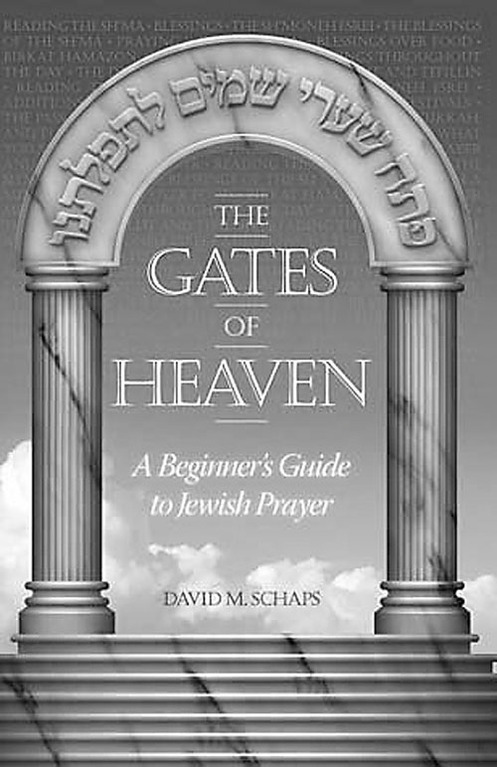The Kosher Bookworm: Priming for prayer
The Kosher Bookworm
by Alan Jay Gerber
Issue of June 25, 2010/ 13 Tammuz, 5770Before reading this essay please consider the following thought from Rabbi Abraham Kon from his work, “Siach Tefilah”: “Prayer is strictly an individual matter, and at the same time universal and common to all mankind. It is an expression of man’s dedication to G–d. Prayer has been known from the beginning of mankind but has undergone constant changes, constant innovations, [and] constant adjustments to changing times. What, therefore is the quintessence of prayer?”Prayer is varied among Jews. Whether nusach or niggun, we each have an individual expression that demonstrates our customs before our creator. Those differences are our greatness.
Of all the spiritual institutions of the Jewish faith, prayer plays the center role in Jewish theology, ritual, and legal corpus. The prime physical institution of our faith, the synagogue, is known as the house of prayer.
Many authors have attempted to explain the literal and figurative meaning of prayers as well as the impact it has on our religious beliefs and practices. Such works as “A Guide To Jewish Prayer” by Rabbi Isaiah Wohlgemuth, “Talks On Jewish Prayer” by Rabbi Bernard Casper, “Prayer” by Rabbi Abraham Kon and the many works by Rabbi Yitzchak Sender, are among the prayer primers that have educated the Jewish community to the underlining themes of prayer.
However, the most prominent single work that has ably served the spiritual needs of our people is the recently reissued, “The World Of Prayer: Commentary and Translation of the Siddur” by Rabbi Elie Munk, [Feldheim, 2007].
This classic published in 1953 and translated from the French, remains the single most authoritative and cited source of siddur commentary in English.
However, as eloquent and scholarly Rabbi Monk’s work is, it was no beginner’s guide to prayer.
Thankfully any dearth of guides has been filled with the recent publication of “The Gates of Heaven” [Feldheim, 2010], aptly billed, “A beginner’s guide to Jewish prayer.”
This guide was composed by an unlikely author, Dr. David Schaps of Bnai B’rak, whose primary academic interests is Greek civilization and cognate studies. He is an associate professor of classical studies at Bar Ilan University. Nevertheless, with this volume, Dr. Schaps has made a very valuable contribution to the world of commentary on Jewish liturgy, and one that truly deserves your attention.
As prologue, let me note that this work comes with approbations from Rabbi Mendel Weinbach, Rabbi Shmuel Kamenetsky, and the Bostoner Rebbe. Such bona fides should help allay any apprehensions of those who might have initially been put off by the author’s bio.
This volume is structured as one big classroom in book format; not as an austere textbook, but a user-friendly discussion manual that gently leads the reader along in his journey to better appreciate what goes into the formulation of the Jewish liturgy and the Jewish life cycle.
Framed into seven parts consisting of twenty four gates, the author goes into great detail in explaining the Jewish liturgy. Starting with the Shma and the Amida, the author, in simple and direct language, details both the theological and linguistic underpinnings that are at the heart of the purpose of these prayers.
This pattern is followed throughout the rest of this 228–page book. The follow-up chapters go into further detail of the structure of daily prayer and the prayers for the Shabbat and holidays.
Such prayer-related issues such a minyan, coming late to sevices, and the differences between Ashkenaz and Sephardic ritual are all given their due.
The very last chapter of this book deals with the meaning and power of prayer. However, I must note that this chapter was the one disappointment in this book. Hopefully, in a future volume the author will further expand upon the ever-too-brief, yet heartfelt, remarks expressed in these last three pages.
This book will indeed make an apt introduction to Rabbi Monk’s work on the siddur as well as a helpful guide to the siddur text itself. Both volumes along with my siddur of choice, The Koren-Sacks Siddur, will all go a long way toward making us more literate in the deeper meaning of our prayer liturgy and better daveners in service to our G–d.

 63.0°,
Partly Cloudy with Haze
63.0°,
Partly Cloudy with Haze 




